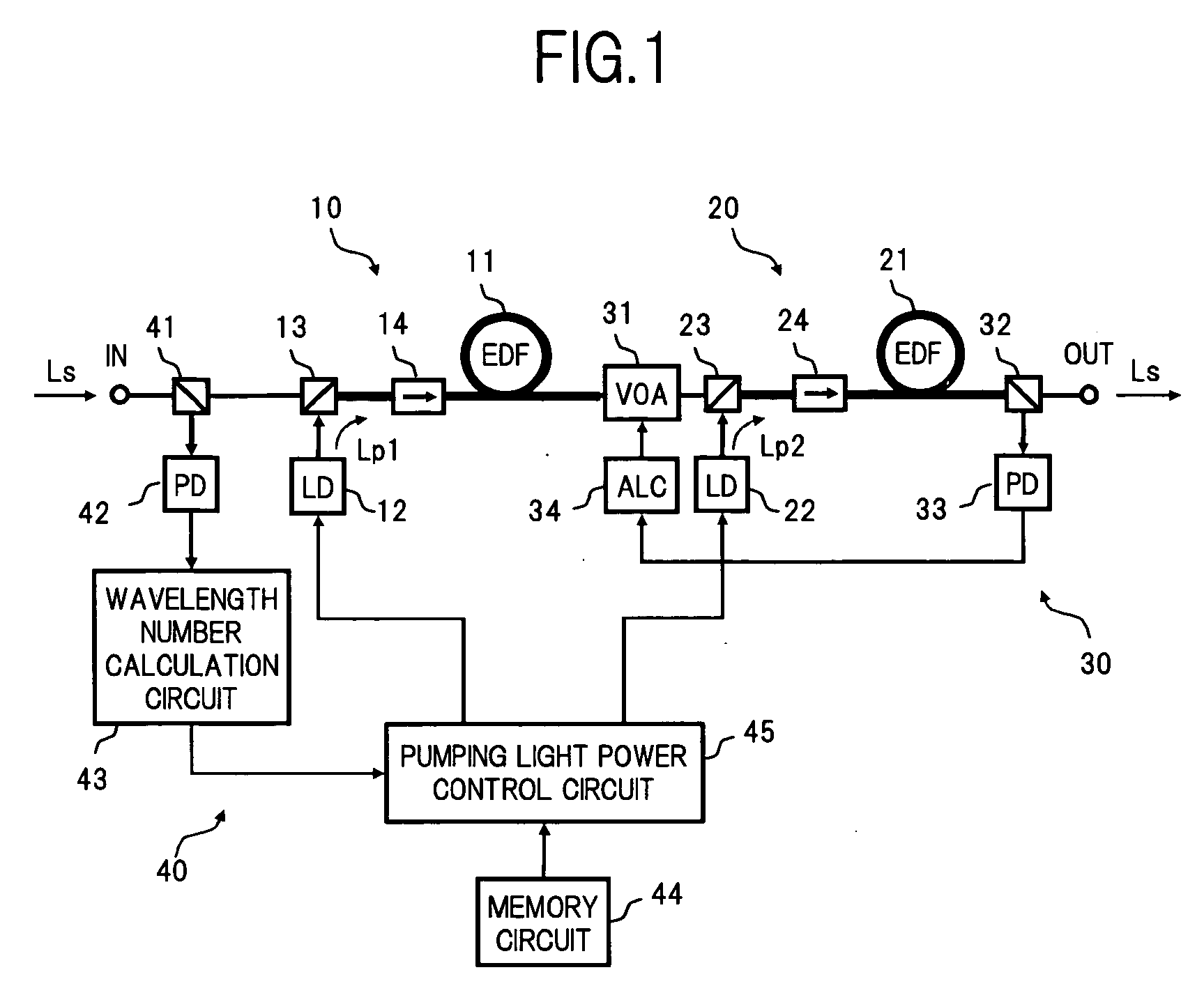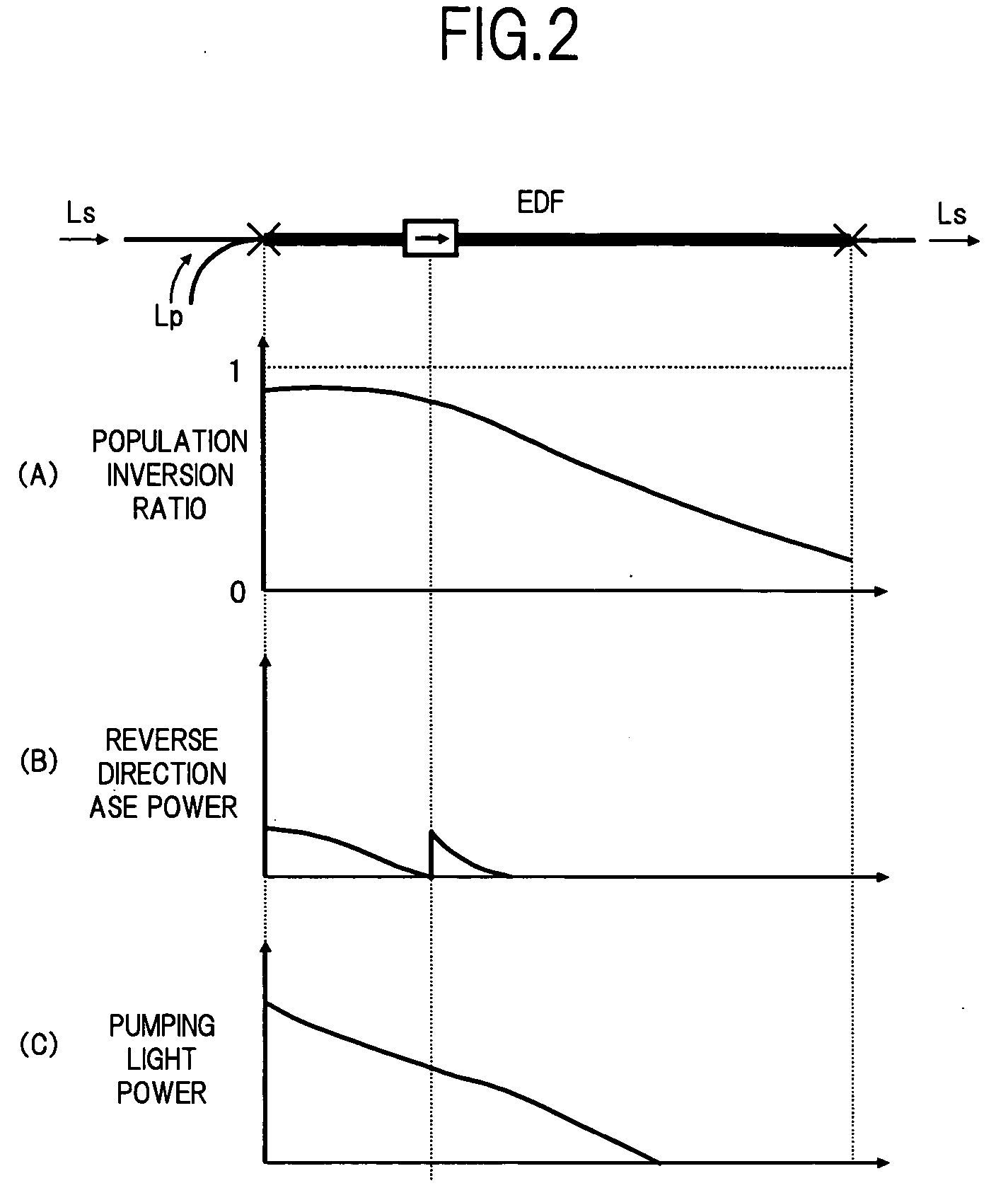Optical amplifier
a technology of optical amplifiers and amplifiers, applied in the direction of electromagnetic transmission, optical transmission with multiple stages, transmission, etc., can solve the problems of large gain fluctuations, deterioration in the quality of transmission characteristics such as transmission distance and transmission band of wdm, and deterioration in transmission quality, so as to improve the efficiency of amplification and ensure constant gain in each of the optical amplification sections
- Summary
- Abstract
- Description
- Claims
- Application Information
AI Technical Summary
Benefits of technology
Problems solved by technology
Method used
Image
Examples
Embodiment Construction
[0047] A best mode for carrying out the invention is described below with reference to the appended drawings. Throughout all of the diagrams, the same reference numerals refer to the same or corresponding parts.
[0048]FIG. 1 is a block diagram showing the construction of a first embodiment of an optical amplifier according to the present invention.
[0049] In FIG. 1, the optical amplifier of the present embodiment comprises, for example, a first optical amplification section 10 and a second optical amplification section 20 connected in a cascade manner between an input terminal IN and an output terminal OUT, a constant output control section 30 which controls the power of WDM light Ls output to the output terminal OUT so as to keep the power constant, and a constant gain control section 40 which calculates the number of wavelengths based on the power of the WDM light Ls input to the input terminal IN, and in accordance with the number of wavelengths controls the power of each pumping...
PUM
 Login to View More
Login to View More Abstract
Description
Claims
Application Information
 Login to View More
Login to View More - R&D
- Intellectual Property
- Life Sciences
- Materials
- Tech Scout
- Unparalleled Data Quality
- Higher Quality Content
- 60% Fewer Hallucinations
Browse by: Latest US Patents, China's latest patents, Technical Efficacy Thesaurus, Application Domain, Technology Topic, Popular Technical Reports.
© 2025 PatSnap. All rights reserved.Legal|Privacy policy|Modern Slavery Act Transparency Statement|Sitemap|About US| Contact US: help@patsnap.com



